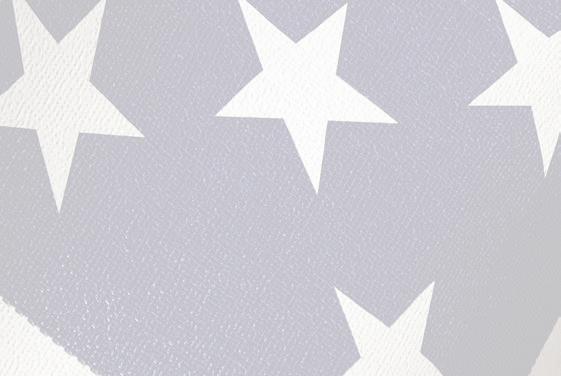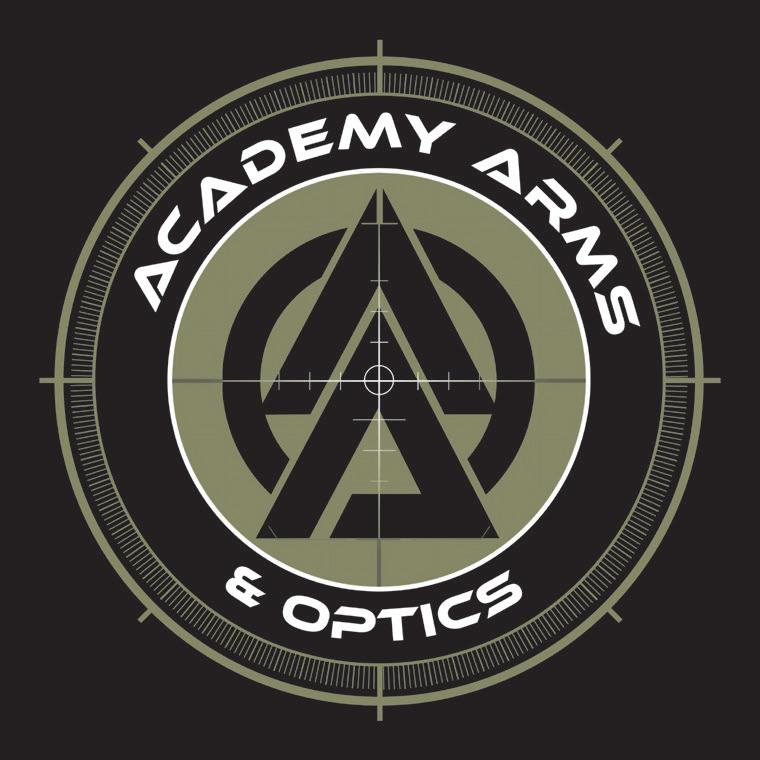




















































































































By Jim Eckstrom
In June 1944, the parents of U.S. Army Sgt. Alfred A. Ranio of Olean received a dreaded notice from the U.S. War Department.
Ranio, who grew up on Wayne Street and graduated from Olean High School in 1940, had died May 22, 1944, while serving in the 82nd Airborne Division in England. While the 82nd was in the midst of intense training for what would be known around the world as D-Day, the June 6 invasion of Europe, Ranio passed away as the result of a heart attack while he was playing baseball with men in his unit. He was 22.
The loss of a son serving far away during wartime is devastating for any family, but parents Louis and Nicolina Ranio had already felt that crushing loss less than two years earlier.
U.S. Navy Seaman Albert Guy Ranio, 20, was killed Oct. 12, 1942, in the naval Battle of Cape Esperance during the Guadalcanal campaign against the Japanese in the Solomon Islands.
Albert served on the USS Boise, a light cruiser that was part of a task force that encountered a force of Japanese cruisers and destroyers to the west of Guadalcanal. In the battle, Boise was hit a number of times, twice by fire from a Japanese heavy cruiser. One hit penetrated under the waterline and exploded in a magazine for Boise’s 6-inch guns causing numerous casualties,
including 107 killed.
Albert was the first known Olean-area man to be killed in the Southwest Pacific during the war.
Despite the heavy damage, the surviving crew of the Boise were able to stabilize the ship and keep it afloat, limping back to the U.S. for repairs in the Philadelphia Naval Yard and returning to service in the war.
Albert’s burial site is in the Manila American Cemetery and Memorial at Fort Bonifacio in the Philippines.
Meanwhile, Alfred Ranio, who worked for the Pennsylvania Railroad after graduating from OHS, had joined the Army in September 1942. He was accepted for service in the 82nd Airborne and had served in the division’s campaigns in North Africa, Sicily and Italy.
At the time of his death, Alfred was a member of C Battery, 376th Parachute Field Artillery Battalion, which was stationed at the former London Road Infirmary site in Hinckley. He was laid to rest with honor at the Madingley American Cemetery in Cambridgeshire.
Today, Alfred is being remembered in the United Kingdom through an effort by a local historian who focuses on the 82nd. With a colleague, Adam Berry has launched the Mission82 project — an initiative to build three memorials in England to honor members of the ddivision who tragically lost their lives here during training accidents or from natural causes.
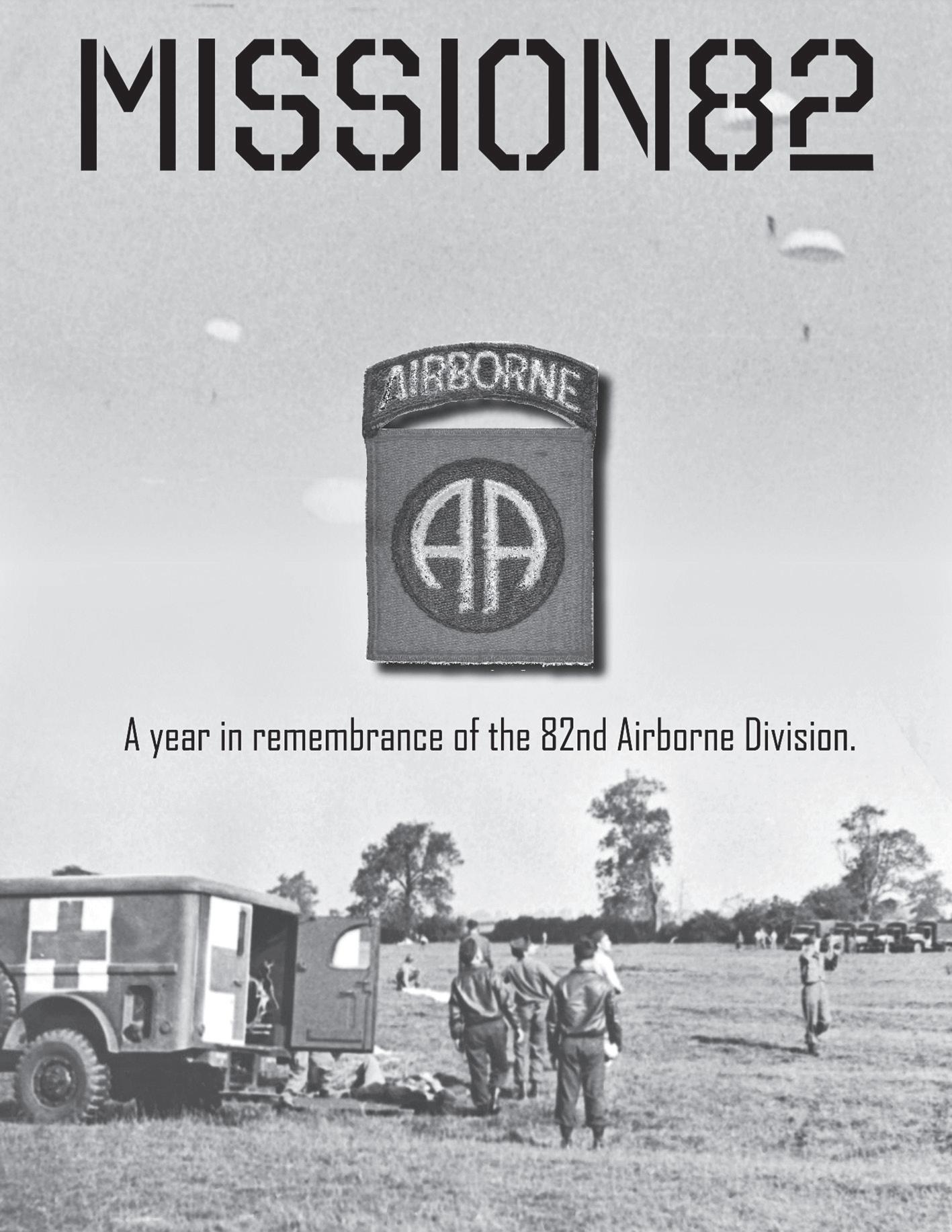
continued from page 4
“These men, though not killed in combat, made the ultimate sacrifice while serving overseas,” Berry wrote to the Times Herald. “Sadly, they are rarely remembered and seldom mentioned in books or memorials.
“We believe the people of Olean might take pride in helping to commemorate one of their own, whose story deserves to be told and remembered,” Berry added.
In 2026, Berry and Darren Bond plan to commemorate the 82nd anniversary of the 82nd Airborne’s arrival in England, where they prepared and trained for two of the most significant military operations in modern warfare: Operation NEPTUNE in June 1944 and Operation MARKET GARDEN in September 1944, pivotal moments in the division’s history that are celebrated in
history books and on anniversaries.
“However, there is a lesser-known reality: many comrades who tragically lost their lives in training or accidents while stationed in England are seldom remembered for their vital contributions,” the organizers state. “Their stories often go untold simply because their deaths did not occur in direct combat with the enemy.”
In 2013, Berry campaigned and raised funds for permanent memorials to the 325th Glider Infantry Regiment, 504th Parachute Infantry Regiment, and 507th Parachute Infantry Regiments close to their former campsites in Leicestershire and Nottingham. He is a published historian on the 82nd, with a particular interest in the division’s time spent in the UK.
Mission82 aims to unveil three
memorials in 2026 at sites in Leicestershire, Northamptonshire, and Lincolnshire. These will honor the loss of 10 members of the division, including Ranio, who were killed in training or died during their time in England.
To follow their progress, visit their Facebook page by searching Mission82. There, readers can find regular updates and a link to a JustGiving page, where donations can be made directly: www.justgiving.com/crowdfunding/mission82
“We truly cannot express how grateful we are for every single donation — however large or small,” Berry and Bond state. “Your support brings us closer to properly honouring the memory of the ten men at the heart of this project.”







By Savannah Barr
Buffalo-Niagara Honor Flight is looking for sponsors for their first all-female mission. This October, 40 women veterans and their female guardians from Bradford and Western New York will land in Washington, DC, for a two-day trip. During their adventure, they will lay a wreath at Arlington National Cemetery and receive special recognition at the Military Women’s Memorial. They will also visit a slew of other memorials and monuments that have been erected in their honor.
“We try to do activities that show our respect for them,” said Donna Quigley, treasurer. Sometimes we have groups of school children who come out to meet us and shake their hands; things like that.”
hosts three trips a year. Usually, their flights are open to both male and female veterans. But for this
and we decided it would be great to have a female-centric flight this time around.”
This all-female flight was partly inspired by the book “The Women” by Kristin Hannah.
“That book was kind of our mantra,” said Quigley.
The novel highlights the story of a military nurse during her harrowing experiences in the Vietnam War and her subsequent reentry into civilian life.
“Many of our veterans are from Vietnam and they didn’t get the welcome home that they deserve,” said Quigley. “We hope that this helps bring them some closure.”
The group is hoping to attract 25 to 40 female veterans from WWII, the Korean War and the Vietnam War.
“We are asking all female vet-
be good to have those applications on file to see what the response is,”





“It costs about $75,000 including the airline, hotel, meals, gear and transportation,” said Quigley.
“Our costs have risen significantly since covid.”
Sponsorships are available at different levels, ranging from $500 to $50,000. Those who donate at certain levels will be able to accompany the veterans on their journey.
Also flying will be a support staff including nurses, tour guides, airline professionals and a mental health counselor. Veterans are also able to bring along a guardian of their choice.
Quigley noted that all support staff are volunteers.
“The money donated goes directly to supporting our mission, not to paying salaries,” Qugley said.
Those who would like to apply can contact Mary Piekart at maryp@ buffaloniagarahonorflight.org or (716) 430-0634.
Those who would like to sponsor should contact Quigley at donna@ buffaloniagarahonorflight.org or (716) 812-3471.
There are also applications available for both veterans and sponsors at bufffaloniagarahonorflight.org.



Memorial Day is observed on the last Monday of May, honoring the men and women who died while serving in the U.S. military.
Originally known as Decoration Day, it originated in the years following the Civil War and became an official federal holiday in 1971. Many Americans observe Memorial Day by visiting cemeteries or memorials, holding family gatherings and participating in parades.
The Civil War, which ended in the spring of 1865, claimed more lives than any conflict in U.S. history and required the establishment of the country’s first national cemeteries.
By the late 1860s, Americans in various towns and cities had begun holding springtime tributes to these countless fallen soldiers, decorating their graves with flowers and reciting prayers.
According to history.com, it’s not clear where exactly this tradition originated; numerous different communities may have independently initiated the memorial gatherings. And some records show that one of the earliest Memorial Day commemorations was organized by a group of formerly enslaved people in Charleston, South Carolina less than a month after the Confederacy surrendered in 1865. In any case, in 1966 the federal government declared Waterloo, New

York, the official birthplace of Memorial Day.
Waterloo — which first celebrated the day on May 5, 1866 — was chosen because it hosted an annual, communitywide event, during which businesses closed and residents decorated the graves of soldiers with flowers and flags.
On May 5, 1868, Gen. John A. Logan, leader of an organization for Northern Civil War veterans, called for a nationwide day of remembrance later that month. “The 30th of May, 1868, is designated for the purpose of strewing with flowers, or otherwise decorating the graves of comrades who died in defense of their country during the late rebellion, and whose bodies now lie in almost every city, village and hamlet churchyard in the land,” he proclaimed.
The date of Decoration Day, as he called it, was chosen because it
wasn’t the anniversary of any particular battle.
On the first Decoration Day, Gen. James Garfield made a speech at Arlington National Cemetery, and 5,000 participants decorated the graves of the 20,000 Civil War soldiers buried there.
Many Northern states held similar commemorative events and reprised the tradition in subsequent years; by 1890 each one had made Decoration Day an official state holiday. Southern states, on the other hand, continued to honor the dead on separate days until after World War I.
Memorial Day, as Decoration Day gradually came to be known, originally honored only those lost while fighting in the Civil War. But during World War I the United States found itself embroiled in another major conflict, and the holiday evolved to commemorate American military personnel who died in all wars, including World War II, The Vietnam War,
The Korean War and the wars in Iraq and Afghanistan.
For decades, Memorial Day continued to be observed on May 30, the date Logan had selected for the first Decoration Day. But in 1968, Congress passed the Uniform Monday Holiday Act, which established Memorial Day as the last Monday in May in order to create a three-day weekend for federal employees. The change went into effect in 1971. The same law also declared Memorial Day a federal holiday.
Cities and towns across the U.S. host Memorial Day parades each year, often incorporating military personnel and members of veterans’ organizations. Some of the largest parades take place in Chicago, New York and Washington, D.C. Americans also observe Memorial Day by visiting cemeteries and memorials. Some people wear a red poppy in remembrance of those fallen in war — a tradition that began with a World War I poem.
On a less somber note, many people take weekend trips or throw parties and barbecues on the holiday, perhaps because Memorial Day weekend — the long weekend comprising the Saturday and Sunday before Memorial Day and Memorial Day itself — unofficially marks the beginning of summer.















































































































By Cory Angell
Lt. Nikolas Erickson, a native of Bradford, continues his security mission in East Africa with the 111th Infantry, 28th Infantry Division of the Pennsylvania National Guard since the unit took command in October.
Company C from Lewis Run was replaced by the Task Force last fall.
“Our mission in the Horn of Africa is very broad,” said Erickson. “We focus on enhancing partner-nation capacity, promote regional stability, dissuade conflict and protect U.S and coalition interests.”
Erickson said life in Djibouti can be austere and the soldiers have gained exposure to what the world is like outside the United States.
“Life in Djibouti has given me a much broader understanding of the world, especially compared to what I knew in the U.S.,” said Erickson.
“This is my first deployment, and I’m already finding that my experiences here are making me a more well-rounded individual.”

Erickson said the deployment has the soldiers working with allied forces from the French Army, Japanese Self Defense Forces, Djiboutian Coast Guard, and they work with the U.S. Air Force closely.
“For many of us, it’s our first time working alongside a different branch of the military,” said the lieutenant. “The opportunity to cross-train with these units has really emphasized the strength of our relationships with allied forces.”
Erickson’s family has a tradition of service that continues with him in the Army and as an Allentown police officer. Erickson’s grandfather, Richard Erickson, served overseas in the Air Force. His father, Todd Erickson, dedicated more than 20 years to Bradford City Police and now works for the McKean County Sheriff’s Department.
“Service to the community runs deep in my family. I admire them both immensely, and I credit them for shaping me. Growing up, I played with military toys and watched military movies, dreaming of one day following in their footsteps. Now, here I am.”
Erickson said military and law enforcement careers have parallels. One of the most significant is the strong family-like connection you forge with your colleagues.
“The military, like law enforcement, exposes you to people from all walks of life,” said Erickson. “You learn to work cohesively with everyone to achieve objectives, resulting in a powerful sense of camaraderie and mutual support.”
The hard work of the soldiers has been noticed.
“I consistently remain impressed by the dedication and resilience of my soldiers,” said Task Force Associator Commander Lt. Col. David Fittipoldi. “Throughout these past eight months, they have faced a demanding schedule of training and operational duties. Their influence has been profound, contributing to my own personal growth. The public should recognize and appreciate their service.
“These soldiers will return home stronger, both physically and mentally, than when they departed. I am incredibly proud of each and every one of them.”

















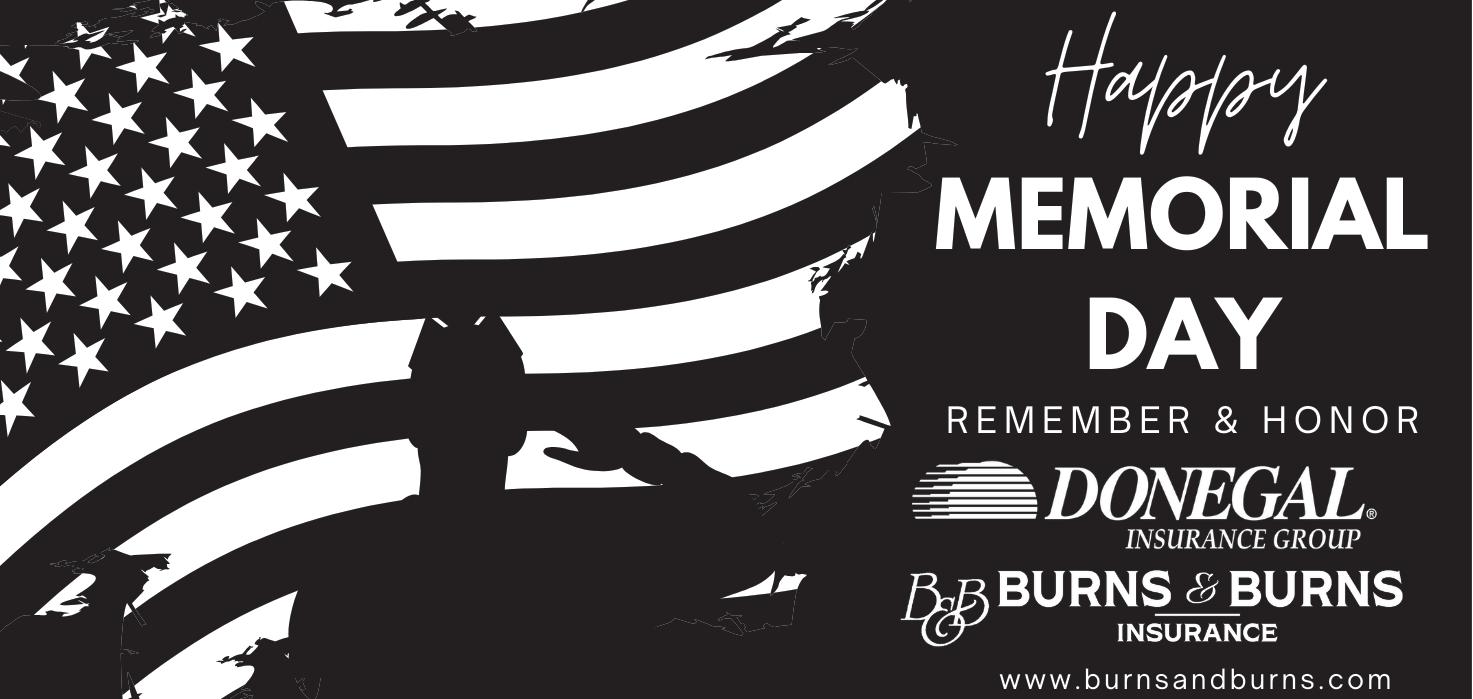



By Brian McClellan

Memorial Day events in Olean begin at 11 a.m. in Lincoln Park. Hosted by Olean American Legion Post 530, the master of ceremonies will be U.S. Army veteran Johnny Gordnier. Officers of the day will be Army veteran Terry Vaughn and Army veteran Shaun App.
The Olean High School band will play the national anthem, and Olean Legion Scouts packs 621 and 619 will lead The Pledge of Allegiance. The Rev. Kim Rossi of St. Stephen’s Episcopal Church and Bethany Lutheran Church will give the invocation. Speakers of the day include Olean Mayor Bill Aiello and Catharine Young.
Rossi will give a benediction, and the Olean High School choir will sing “God Bless America.” A moment of silence will follow as well as taps and closing statements. Food will be available at the American Legion after the ceremony.
Other events, as reported in time for the printing of this publication by area veterans groups, include:
• Allegany — Parade lineup at 9 a.m., parade at 9:30 a.m. with ceremony at memorial at the Allegany Town Hall.
• Belmont — The Belmont American Legion Post 808 will host its fourth annual Summer Kick Off on Saturday. Music includes DJ Yendor Snave from 2-10 p.m. Activities include an Auxiliary vendors and artisans market from 10 a.m. to 2 p.m., a bake sale and raffles. A fireworks show by Young Fireworks will be viewable throughout the village at dusk. On Sunday, there will be cornhole and music by the Dirt Turtles Band from noon to 4 p.m. On Monday,

the community parade starts at 11:30 a.m., with services at Park Circle at noon. The Sons of the American Legion will host a chicken barbecue afterward.
• Bolivar — 10 a.m. parade followed by ceremony at Maple Lawn Cemetery.
• Cuba — 11 a.m. parade down Main Street to Veteran’s Park. Memorial service to follow at Genesee Park, followed by a barbecue for veterans and their families at the VFW Post 2721 at noon.
• Friendship — Friendship American Legion Post 1168 members will begin services at area cemeteries at about 7:30 a.m. The parade in Friendship is set for 10 a.m., beginning at the United Church of Friendship and ending at the Friendship Library, where there will be a memorial service.
• Hinsdale — A service will be held at 11 a.m. at the American Legion.
• Machias — Parade at 11 a.m. followed by a memorial service.
There will be a chicken barbecue at 11:30 a.m. at the fireman’s hall.
• Portville — Chicken barbecue from noon until sold out in the pavilion behind the Post clubhouse. Cost will be $13. Line up at 1:30 p.m., parade at 2 p.m., followed by services at Chestnut Hill Cemetery.
• Richburg — 9 a.m. parade along Main Street with a ceremony to follow at Richburg Cemetery.
• Seneca Nation of Indians — Iroquois Post 1587 American Legion and the Seneca Nation of Indians will host several events. A Sunrise Service will be held at 11:30 a.m. Sunday morning at the Seneca Nation of Indians Cemetery in Irving, across from the William Seneca Building. A Memorial Day Service will be held at 11 a.m. at the Seneca Allegany Administration Building in Salamanca (SAAB).
• Wellsville — The Morrison Hayes Unit 702 American Legion Auxiliary will hold a memorial for deceased Unit 702 Auxiliary
members at 11 a.m. Sunday in front of the post. On Monday, Veterans Memorial Park services will begin at 9:30 a.m. The American Legion is holding a parade on Main Street from Pearl Street to the Main Street fire hall at 10 a.m. Services will follow at Woodlawn and Sacred Heart cemeteries and at the post on Jefferson Street.
• Bradford’s 2025 Memorial Day parade will be held May 26. Lineup will begin between 9 and 9:30 a.m. on Davis Street. The parade will commence at 10 a.m. on Main Street. A Memorial Day ceremony will begin immediately following the parade, usually around 11 a.m.
• Crosby American Legion Post 976 will conduct its Memorial Day ceremony on Saturday, May 24. Coffee and doughnuts will be available at 9 a.m. at the Post. The ceremony will be held at 10 a.m. at the Veterans Memorial at the Crosby Ballfield. Proceedings will then continue at Colegrove Cemetery before returning to the Post. The Auxiliary of Post 976 will provide a soup and sandwich luncheon following the conclusion of the ceremonies.
• The Eldred Memorial Day parade will start at 11 a.m. by the Eldred World War II Museum. The parade will go down Main Street until it reaches Campbell Alley — it will proceed up the alley to the school this year instead of up Mechanic Street. American Legion Post 887 will be open 10 a.m. to 6 p.m. Monday and the post will hold its weekly drawing at 7 p.m. Tuesday.
• The Eldred World War II Museum, 201 Main St., will be open 10 a.m. to 4 p.m. on Memorial Day.



































































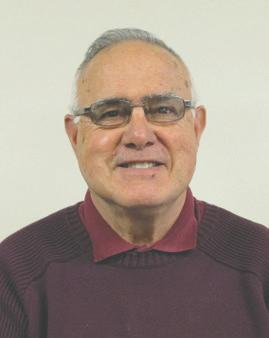
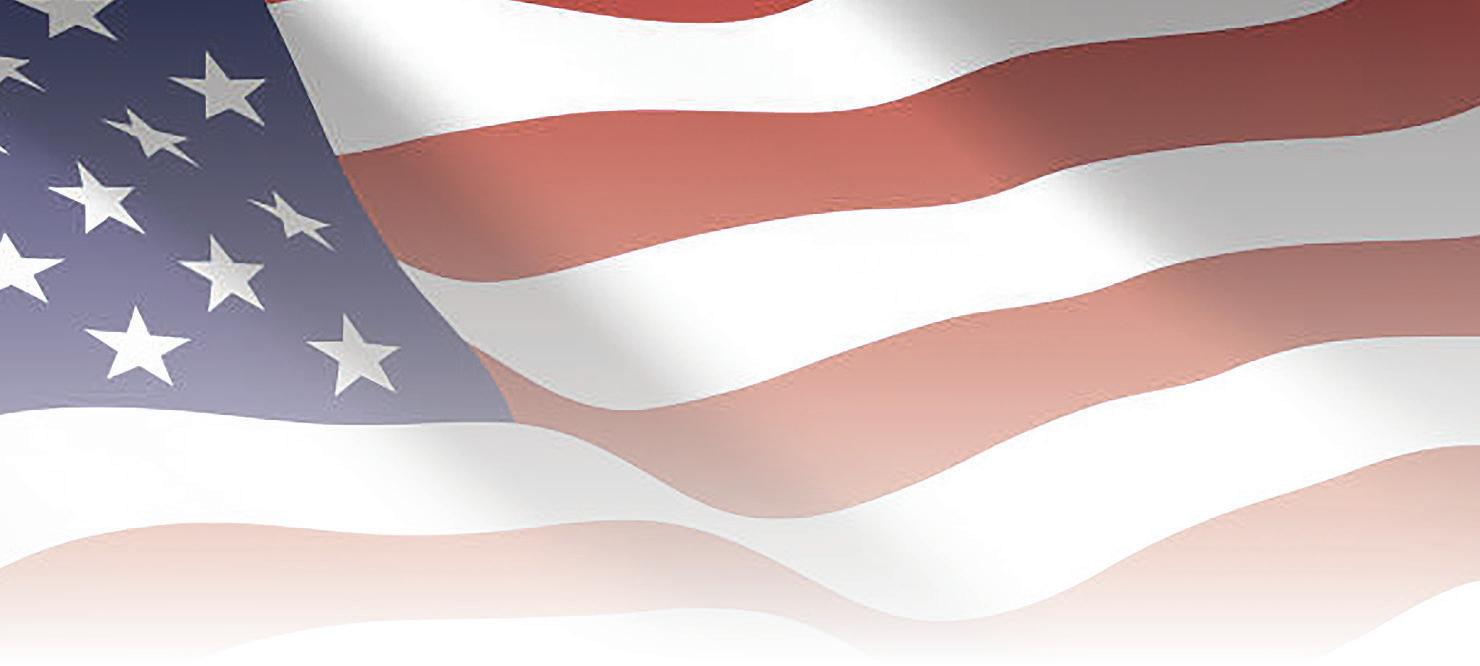







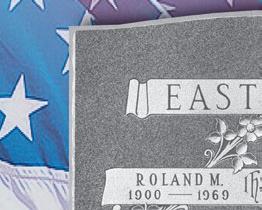








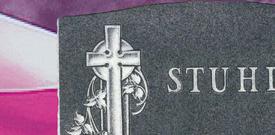
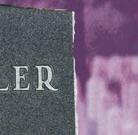
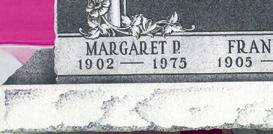














































































































































By Cory Angell

Boalsburg, Centre County, is home to Pennsylvania Military Museum, the 28th Division Shrine and claims to be the birthplace of Memorial Day. The shrine includes the 1st Battalion, 112th Infantry, whose Charlie Company serves in Lewis Run.
Every year, the 28th Infantry Division Remembrance Ceremony for Memorial Day is held there. Boalsburg is home to what used to be the Boal Troop whose soldiers served in World War I.
Col. Theodore Boal established a monument after World War I. It became the memorial to Pennsylvania’s 28th Infantry Division with monuments added over the past century. It is also home to the state’s military museum, which is currently under renovation.
“The annual event at Boalsburg has special meaning for the soldiers of the 112th and their proud heritage,” said Lt. Col. Gerald Mothes, commander of the 1st Battalion, 112th Infantry. “Members of the regiment strive to live up to our history, Boalsburg embodies that history.”
The event includes every unit in the division from across Pennsylvania.
Vehicle and aviation displays are held, a picnic and a cannonade by
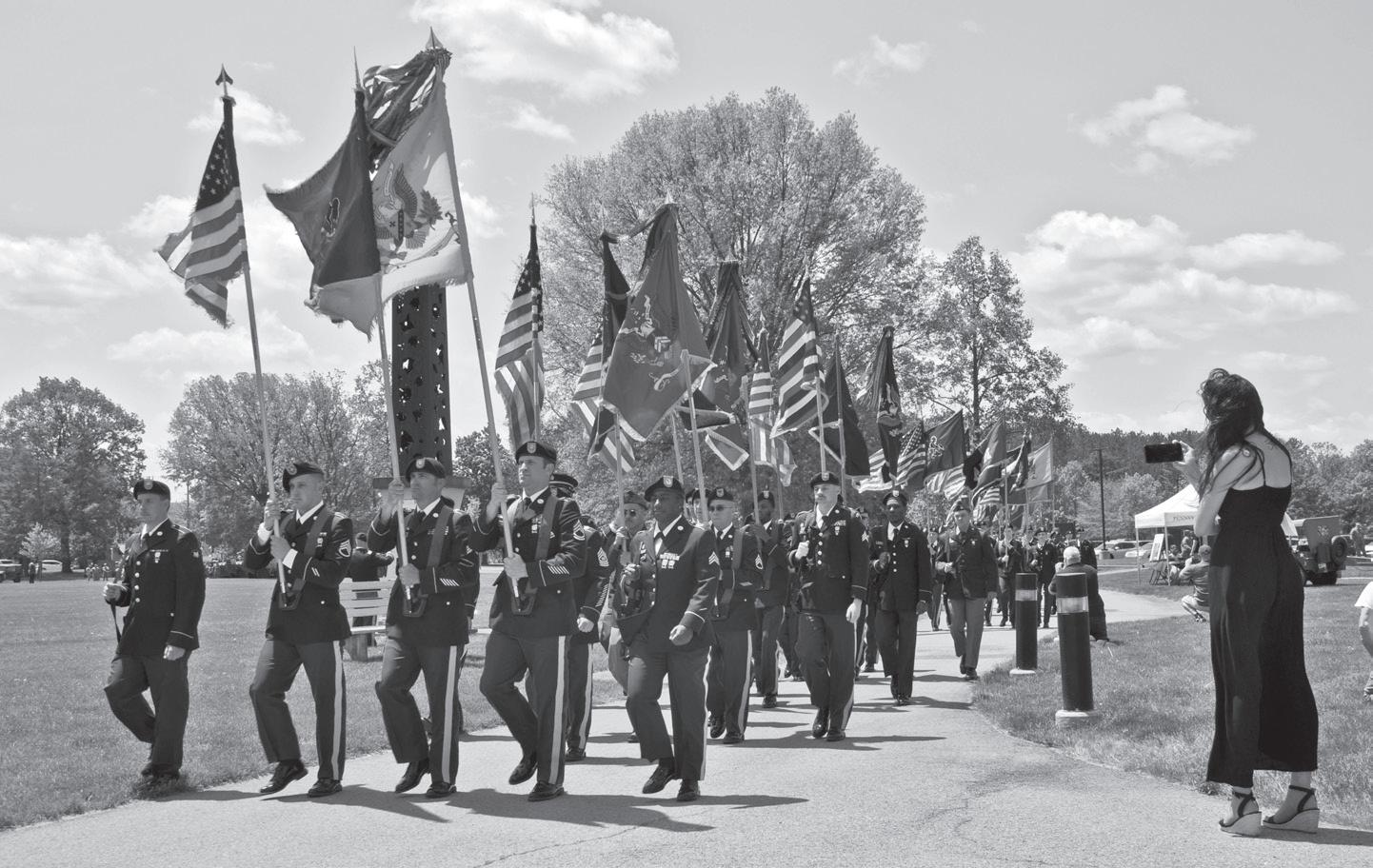

the artillery is presented as a 21-gun salute to conclude the ceremony. The memorial ceremony includes hundreds of soldiers from the division carrying the colors of the division, brigades, battalions and companies from across Pennsylvania. It is heavily attended by senior military leaders, veterans’ organizations and retired military.
“The ceremony has been held for over 100 years,” said Tyler Gum of the Pennsylvania Historical and Museum Commission. “It highlights the service and sacrifice by Pennsylvanians, with the focal point being our Gold Star Families.”
Gold Star families are ones whose loved ones were killed in action.
Boalsburg claims to be the birthplace of Memorial Day with a monument nearby.
This year, two 112th Infantry soldiers from out of state are being remembered in Gathemo, France, June 7. The townspeople are dedicating a monument to them 80 years after the regiment helped liberate their town.
“Both of these 112th soldiers gave their lives in August 1944 to liberate this town from Nazi tyranny,” said Mothes. “The French still remember our history and so should we. It is this kind of selfless sacrifice that makes the ceremony at Boalsburg so important. We must never forget those who gave all, so that we can live free.”

By Deb Everts

SALAMANCA — As Americans celebrate Memorial Day, they pause to remember the sacrifices made by their loved ones who lost their lives while serving in the United States Military.
George H. Chamberlain was a Salamanca resident who left home in 1942 to fight in World War II. The 25-year-old was killed in action Nov. 2, 1943, at Rabaul, New Britain in the Papua New Guinea region, over 81 years ago.
Chamberlain served as a staff sergeant (SSgt.) and crew member on B-25D “Fifi” #41-30311, 8th Bomber Squadron, 3rd Bomber Group, Light, U.S. Army Air Force during World War II.
According to information found on findagrave.com, Chamberlain was declared “Missing In Action” when his B-25 was hit by intense anti-aircraft fire from a Japanese cruiser. Their stabilizer was shot off, along with the left wing and outer wing, causing them to crash upside down into Simpson Harbor, south of Lakunai Airfield and due west of Matupi Island during the war. He was awarded the “Distinguished Flying Cross” and the “Purple Heart.”
All crew members perished that day. The other airmen serving with Chamberlain on the bomber included Howard R. Bunce, 2nd Lt., Co-Pilot, Conn.; Robert E. Murphy, 2nd Lt., Crew, Fla.; Miles L. Rowe, T/Sgt., Crew, Idaho; Raymond H. Wilkins, Maj., Pilot, Va., who received the “Medal Of Honor.”
The aircraft they served on was a North American B-25 Mitchell, which was among the Top 7 WWII American bomber planes. It earned its reputation for high-speed performance at high altitudes, and flew approximately 272 miles per hour.
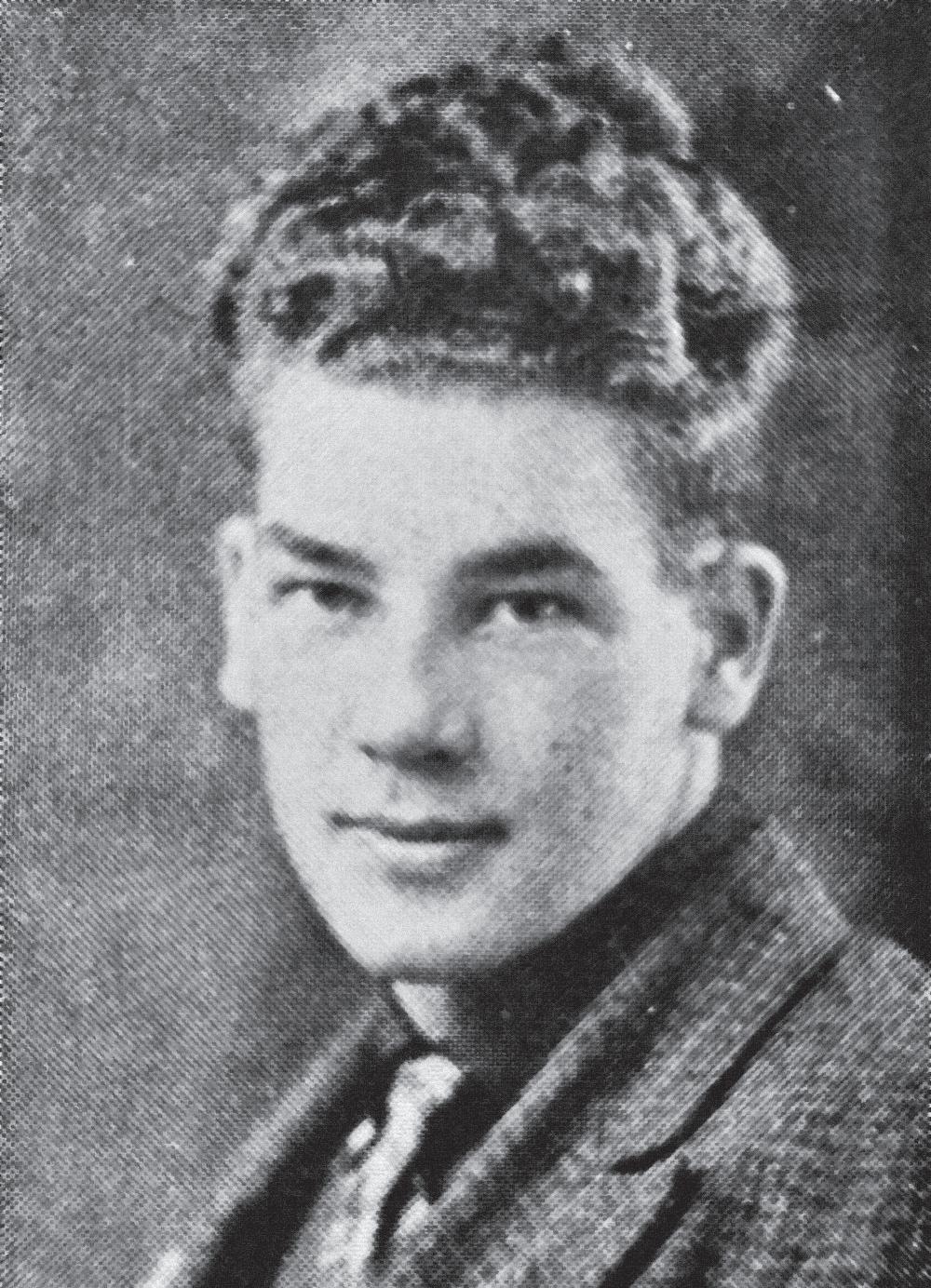
of anti-aircraft fire, which damaged his plane, and a large number of airborne enemy planes, the squadron pressed in at a minimum altitude to attack shipping. Two 1,000-pound bombs from this B-25 scored direct hits on one destroyer, leaving it in flames, and severely damaged a large merchant vessel. Two cruisers were observed throwing up intense anti-aircraft bursts and, in order to aid the other bombers, this crew made a strafing attack against one of the warships.
During the run, the plane sustained a direct hit, causing it to roll out of control and crash, costing SSgt. Chamberlain his life.
The outstanding courage and devotion to duty displayed on this occasion are worthy of the highest commendation and contributed to the
success of this important mission in which a total of 50,000 tons of shipping was destroyed, three destroyers sunk and two cruisers, and considerable merchant shipping damaged.”
Born June 26, 1918, Chamberlain was the son of Mrs. Verna Chamberlain, but his father’s name is unknown. He attended Salamanca High School and his senior photo was found in the 1936 yearbook.
At the time of his enlistment in Buffalo, Aug. 29, 1942, Chamberlain was married to Phyllis (Rzenick) and they lived with his mother at 96 Erie Street. He was employed as a brakeman by the Erie Railroad.
He was a graduate of the gunnery school at Tyndall Army Airfield in Florida, where he received his silver wings and sergeant’s rating. He underwent combat training at Columbia, S.C. and, after being stationed at
...continued on page 19
An undated newspaper clipping from The Salamanca Press, found in the WWII scrapbook of the late Isabelle Probes, described Chamberlain’s posthumous award. The headline read, Distinguished Flying Cross is awarded posthumously to Sgt. G. H. Chamberlain.
“Somewhere in the Southwest Pacific Lt. Gen. George C. Kennedy, commander of the Allied Air Forces in the Southwest Pacific, has awarded, posthumously, a ‘Distinguished Flying Cross’ to Staff Sergeant George H. Chamberlain for extraordinary achievement while participating in an aerial flight over Rabaul, New Britain, Nov. 2, 1943.
The airman was a crew member of a B-25 leading a squadron in a coordinated attack against this Japanese base, which was regarded at the time as the strongest in the Southwest Pacific area. Despite a heavy barrage

By Mike Pesoli Associated Press

ARLINGTON, Va. — For the last two years, Army Sgt. 1st Class Andrew Jay has been dutifully guarding the Tomb of the Unknown Soldier at Arlington National Cemetery.
Rain or shine, snow or sleet, for 24 hours a day, 365 days a year, Jay and
continued from page 18

San Francisco for a short time, he was sent overseas to Australia in July 1943, then to New Guinea.
No obituary has been found about Chamberlain’s death in any local newspapers from November 1943, when he was killed. His body was never recovered.
SSgt. Chamberlain is memorialized on the Tablets of the Missing at Manila American Cemetery, Manila, Philippines. A bronze plaque commemorating him is located in Wildwood Cemetery.
The staff at the Salamanca Historical Society Museum and the Salamanca Public Library assisted in researching Chamberlain’s personal and military information for this story.
the other guards on watch duty serve as both protectors and commemorators of a national tribute to America’s unidentified and missing service members.
With Jay’s final walk scheduled for June 2, this Memorial Day will hold special significance for him as the cemetery prepares for a string of events honoring those who paid the ultimate price for their country.
“It’s meant a lot,” Jay, 38, told The Associated Press. “I’m going to try to make sure it doesn’t define me, but it was definitely a defining moment in my career.”
The Associated Press was given rare access to the changing of the guard at the sunrise hour, as the cemetery was still closed to the public.
Jay, who is from Indianapolis, volunteered for the position after serving in the Tennessee-based 101st Airborne Division, which specializes in air assault operations and is known for its record in World War II. He trained for almost 18 months for the guard duty.
“The training is unlike anything I’ve ever done in my career so far,” he said. “It’s more than the physical aspect of any other Army school you might think of.”
The guards, also known as sentinels for their watchful duty, train even on their off-days, walking on the mat for two hours straight to build up muscular endurance.
But that isn’t the only endurance required of the sentinels.
“It’s a lot of mental ability,” Jay said. “You have to be locked in for a nine-minute guard change, but then also your 30-minute walk. So, what you’re thinking about kind of varies between soldier to soldier.”
The sentinels spend half an hour walking the mat in the warmer months and an hour during colder months. They perform a dramatic changing of the guard at the grave site that visitors to the Washington
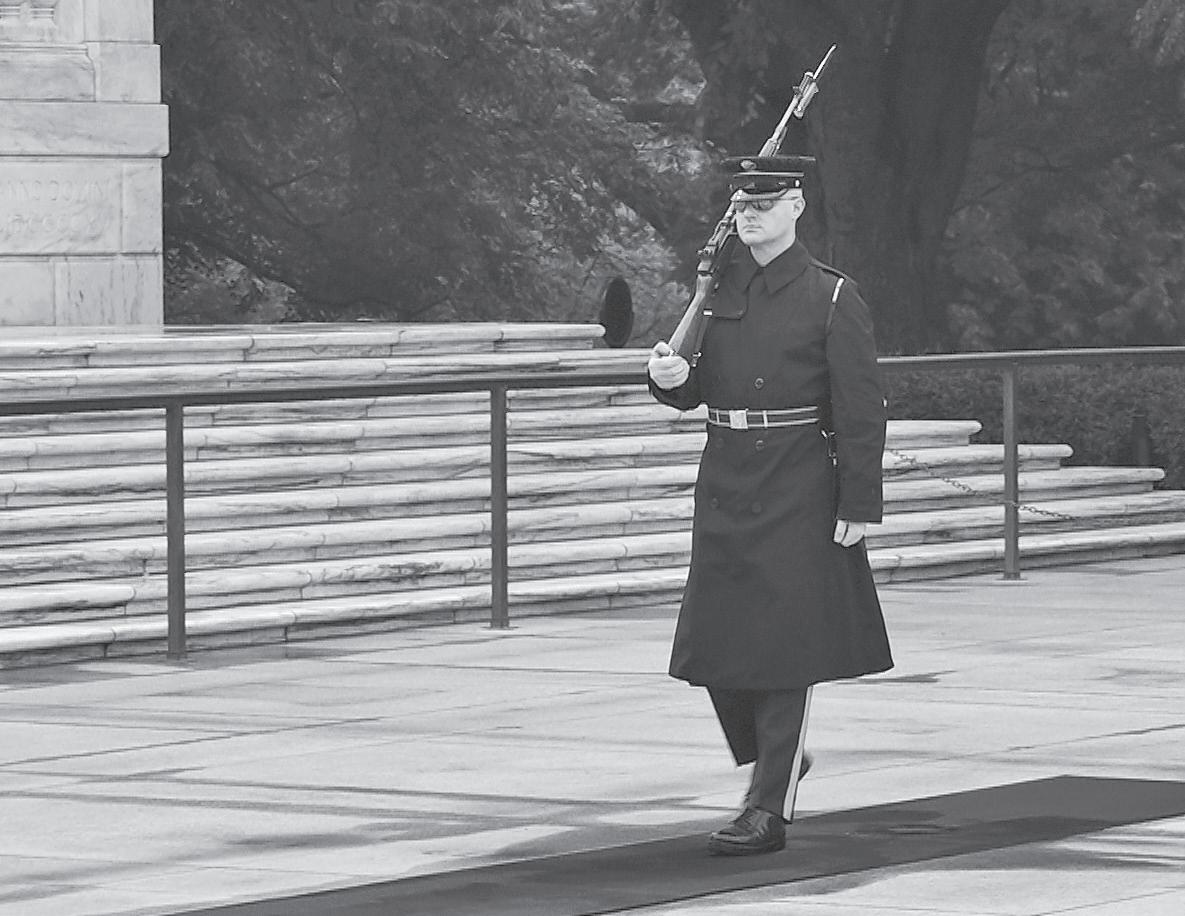
area flock to see, marching 21 steps down the mat, turning and facing east for 21 seconds, then north for 21 seconds and then back down the mat for 21 more, repeating the process.
The number refers to the high military honor of the 21-gun salute, which can be heard booming throughout the cemetery and surrounding areas during military funerals on the grounds.
There are currently three unidentified U.S. service members buried in the tomb: one from World War I, one from World War II and one from the Korean War.
With Memorial Day approaching, the cemetery — which is run by the U.S. Army and has 3 to 4 million visitors annually — will hold a number of events to honor fallen service members. Just before Memorial Day weekend, the 3rd U.S. Infantry Regiment places American flags at the
grave sites of more than 260,000 service members buried at the cemetery — an event known as “Flags In.” On the Sunday of Memorial Day weekend, the public is invited to leave flowers at the Tomb of the Unknown Soldier for Flowers of Remembrance Day.
“Memorial Day still retains the purpose that it had back in 1868 during that first official observance here in Arlington,” said Allison Finkelstein, the senior historian of Arlington National Cemetery. “It is the day to remember and honor our war dead.”
There have been 733 tomb guards since 1958. On average, seven to nine tomb guards work every day.
“The honor of guarding them isn’t just about the Three Unknowns, it’s about everybody that lays here in the cemetery and what they gave in the pursuit of freedom,” Jay said.

By Savannah Barr
America is a diverse nation full of different ethnicities, religions and identities but one symbol continues to represent us all — the flag.
Treating our flag with proper etiquette shows not just our patriotic ideals but also our respect for one another. Venerating the flag through long-held customs and ceremonies helps preserve national heritage and connects present generations with those that came before. Above all, observing flag etiquette is a way to show courtesy — to our country, to our veterans and our fellow citizens.
“When I work with kids at the museum, I tell them what the ‘red’ in the flag represents and then I tell them to go home and research the other two colors,” said Steve Appleby, former curator of the Eldred WWII Museum. “We don’t even teach kids in school what the colors represent anymore and I think that is a shame.”
For those who don’t know, Appleby explained red stands for valor and the blood of patriots, white represents purity and innocence and blue stands for vigilance, perseverance and justice.
“I believe it is the responsibility of everyone to learn a little bit about our flag and to learn to display it and dispose of it properly,” said Appleby.
Museum staff are keen to help visitors understand and appreciate the flag’s history.
The United States flag was first established as the official standard of our nation on June 14, 1777, by an act passed by the Continental

Congress. Later, President Harry S. Truman would officially declare June 14 as Flag Day. The flag has undergone several changes since 1777, including changes to the shape, design and arrangement of the stars and stripes. Stars have been added throughout the years as new states have been admitted.
Our modern flag consists of 13 horizontal stripes representing the original 13 colonies. The stars represent the 50 states of the union.
Flag etiquette dictates proper procedure for displaying the flag and the proper way to retire one.
“It is pretty detailed when you get down to it,” said Appleby. “It explains where certain sized flags are meant to be displayed and what particular sized pole each is supposed to have.”
There are some rules that may surprise people, such as the prohibition of using the flag as clothing or for advertising.
“If you wear a t-shirt with the American flag on it that is different,” said Appleby. “But the flag is never supposed to be made into clothing — that is a violation of flag code.”
Simple tips are to never fly
the flag during bad weather or at night, and to replace the flag once it becomes torn or soiled. Proper disposal of the flag requires a special ceremony, which can be carried out by several local organizations, including local Boy Scout troops. Those with flags to be disposed of can drop them off at any local VFW, American Legion post or the Eldred WWII Museum.
“As a symbol of our nation, the flag should always be shown the utmost respect,” said Amy Peterson, Frances Sherman VFW Auxiliary 212 president. “If your American flag is no longer the picture-perfect emblem of respect for our country it once was, it’s considered disrespectful to keep flying it.”
American flags are retired through a sacred ceremony that involves respectful burning. She notes that organizations may hold various ceremonies to retire flags. In her position with the auxiliary, Peterson has undergone several hours of training on the topic. The overall point is to show the utmost respect.
Here are some tips on U.S. flag etiquette, from the Veterans of Foreign Wars website.
• The flag should never touch the ground. It should not be displayed after sunset or during inclement weather.
• When choosing to display the flag 24 hours a day, the flag must be properly illuminated.
• If it is on the same staff as another flag, the U.S. flag should be at the peak. Grouped, the U.S. flag goes to its own right. Those marching should also hold the flag to their right.
• When saluting the flag all people present should face the flag and stand at attention with their right hand over their heart. If applicable, it is customary to remove one’s hat.
• The blue field of stars should always be displayed at the top and to the flag’s own right when hung vertically.
• The flag should never be used as clothing, drapery or for advertising. When using bunting as decoration always choose bunting with the blue on top, then white, then red.
• The flag should never be written on or marked in any way.
• When a flag becomes worn, faded or torn, it should be retired in a dignified manner, usually by a ceremonial burning. Those with flags that need to be retired can drop them off with any local Boy Scout troop, VFW or American Legion.
• June 14 is Flag Day, commemorating the adoption of the flag as our national standard in 1777.
• The U.S. Flag Code was established in 1923 to formalize etiquette and protect the flag’s symbolism.
• The colors and design of the flag all contain deep meaning. The red symbolizes valor, bravery and the blood of those who have died to protect our freedoms, white signifies purity and innocence and blue stands for vigilance, perseverance and justice. There are 13 stripes to represent the 13 original colonies and 50 starts to represent the 50 states of the union.






By Arthur G. Austin Jr.
Memorial Day and its observance have never been more critical than today — critical in that we as a nation are losing sight of what the day means, what it took to become the world military power we are and why understanding our history is critical to our survival as a nation.
Our history as a nation, however troubled, is important.
It’s been a few years since the last Memorial Day event I coordinated for my home of Cuba. It was truly a community event. The capacity of the park was tested with everything from civic to patriotic organizations, schools and service clubs, all well represented.
One of my favorite memories was the idea of a Bicycle Brigade, brought to me by one of the civic leaders who recalled the nostalgia of times gone by.
I was able, with the help of a couple of church groups along with a couple key teachers, to bring back the nostalgic vibrance of decorated bikes during the parade. Also mem-
orable to me — and one that I see as being most important — was getting youth groups, our future leaders, involved. From Scouts of America to musical groups and the high school band, young people participated that day, recognizing those who served and sacrificed, celebrating their lives and service.
I turned over the reins of continuing the event to others in the community. Some were critics, others were just patriotic people looking to get involved. Regardless, I enjoyed having set the pace before joining other communities and organizations in their celebrations of the day.
announcement from our current administration in Washington D.C., I’m wondering if Memorial Day will somehow be diminished as May 8 and Nov. 11 will now become celebrations beyond Memorial Day and Veterans Day.
Our president proclaimed that a new celebration was to begin on May 8 of this year, proclaiming it will now be known as “Victory Day for World War II.” He added that Nov. 11, Veterans Day, already celebrated nationwide, will now also be celebrated as “Victory Day for World War I.”
If there is anything that we have learned in dealing with the current administration, it is to listen to what is being said or, more importantly, listening to what is not being said. There is a litany of rumored and alleged comments concerning the president and military service centered on the concept that America likes winners; however, as with anything, actions speak louder than words. Facts are still facts and opinions are just that ... opinions.
Victory in Europe Day (May 8, 1945) marks the surrender of Germany. However, the Battle of Okinawa, one of the bloodiest battles of World War II, didn’t end until June 22, 1945.
The fighting in Okinawa claimed the lives of more than 12,000 U.S. service members. What is at the basis of this new proclamation fuels the fire of what we have heard in the past few years concerning winners versus losers.
The administration seems to be leaning toward the idea and concept that those who fought in the Korean War, Vietnam and Afghanistan are somehow less. Just to be perfectly clear, ALL veterans who survived the horrors of battle are winners. Nothing can prepare the human brain for the outright terror of warfare.
Military doctrine, practices, procedures and our collective history are important. There is no partisanship, no red versus blue. We swore an oath to support and defend the Constitution of the United States of America. Memorial Day is just one part of that honor of service.
On Memorial Day, we pause to remember fellow service members, mentors, battle buddies and others with whom we have served who either gave the ultimate sacrifice during their service or succumbed to their injuries later. Others passed on after serving this country in one of our branches of service.
I have participated in many memorial services during my active military service. It is part of our military heritage. I’m not sure where this administration is headed with these additional proclamations. I still can’t shake listening to someone close to me who worked for the federal government. In the now infamous “fork in the road” federal email debacle they were asked to list what their department did for “brown people.”
there seems to be an undercurrent of speculation of a lack of qualification. Somehow our service members dead or alive who are of certain gender or

skin color have come under attack. The attempt at rewriting history is becoming normalized. The battle cry of late calls for Dedicated Educated Individuals (DEI) to be removed, erased or otherwise placed under suspicion concerning their qualifications and service. Along with this, it has now turned into what could be construed as attacks on observances like Memorial Day and Veterans Day. According to a 2023 census, celebrating only the veterans of WWI and WWII would see 99% of living veterans excluded — just 66,000 of WWII veterans remain out of the 15.8 million American veterans. In the past few years, I have gotten to know, record the service of, and appreciate many of the WWII veterans,
continued from page 18
both men and women. Conversations with them have helped cement the importance of Memorial Day.
On a different note, I was recently asked about the qualifications it takes to become a general officer in the Army. At the base of this question lay the problem at hand. The common citizen doesn’t understand the makeup or requirements of our military. Now, with grossly underqualified individuals heading federal agencies, especially our military, new realities are coming into play.
With the removal of Confederate statues on one side, and now the removal of anything considered DEI from the other, second- and third-order effects are being put into motion that we as a nation may never recover from. We need to understand our history, our real history, or we may fall victim to repeating the ills of it. As I have often said, you need to tell
your story; if you don’t, somebody else will … and you probably won’t like their rendition.
All branches of service have levels of requirements that must be met before promotion. If anything, the requirements have grown significantly since WWII. Memorial Day honors those who paid the ultimate sacrifice of having died during service to this country.
As with each Memorial Day, on which I am given the privilege to write articles in association with Memorial Day, I ask that you remember, tell your story, ask questions of your service members, learn about their individual service. Memorial Day is important, let this not be the last.
(Retired U.S. Army Brigadier Gen. Arthur G. Austin Jr. lives in Cuba and is an advocate for veterans throughout the Twin Tiers.)
















































































































































































NEW WINDSOR — Ten New York Army National Guard Soldiers received the Purple Heart for being injured in a Jan. 28, 2024, drone attack on a U.S. base in Jordan known as Tower 22.
Three U.S. Army Reserve Soldiers were killed in the attack, and 40 other personnel were injured.
The Purple Hearts were received during a May 10 ceremony at the National Purple Heart Hall of Honor in New Windsor.
Lt. Col. Darren Ketchum, the commander of their unit, the 101st Expeditionary Signal Battalion, presented the medals.
Major Gen. Raymond Shields, the adjutant general of New York, attended the ceremony as well.
Ketchum praised the 10 men for their actions that day.
“This decoration is not sought, and it’s not given lightly. It is earned through courage in the face of danger. Today, we recognize those who stood firm when faced with the harshest realities of combat,” Ketchum said.
The soldiers, “endured injury from hostile actions resulting from the enemy attack at Tower 22 and continued to uphold the highest standards of duty, courage and resilience,” Ketchum said.

22 base, which housed 350 service members focused on reconnaissance and Special Forces operations, were specially selected for the mission.
These soldiers from Charlie Company, located at Tower 22, were a hand-selected team; “we knew they would operate at the far reaches of our area of responsibility,” Kramarz said.
The 10 soldiers honored during the ceremony were: Staff Sgt. David Barrientos, from Zebulon, North Carolina, Sgt. Anthony Gist of Floral Park, Sgt. Ryan Kissoon of Richmond Hill, Sgt. Guillermo Renderos of Yonkers, Sgt. Jarvis Ho So of Brooklyn, SPC Christian Tiburcio of Manhattan and SPC Matthew Crespo, SPC Domingo Perez, Junior Clarke and SPC Michael Branch, all of Brooklyn.
Fourteen New York National Guard soldiers from the battalion’s Charlie Company were stationed at the outpost to maintain communications. The drone hit a section of the base where soldiers lived. New York soldiers suffered concussions and other injuries because of the blast.
Despite this, soldiers who were not severely injured worked together to restore communications from the outpost to the outside world as quickly as possible. The combat lifesavers in the unit grabbed their aid kits and went to help treat other injured soldiers, despite their wounds.
The National Purple Heart Hall of Honor, now a state park site, was created to preserve the stories of 1.2 million Americans awarded the Purple Heart. According to park officials, the stories of these 10 soldiers are now part of that record.
The Purple Heart was created by George Washington in 1782 while the Continental Army was camped in New Windsor, watching the British Army, which still occupied New York City.


Other New York National Guard soldiers who were uninjured lined up to donate blood to save the lives of badly injured airmen and soldiers.
According to 1st Lt. Ian Gallagher, the platoon leader, the Containerized Housing Unit housing some New York Guard soldiers was “crinkled like a soda can” due to the blast.
He is proud of his men, and proud they were honored, Gallagher said.
The Charlie Company commander, Capt. Paul Kramarz, said that the soldiers assigned to the Tower
Initially, the medal was created to honor military merit. In the 1930s, it was revived to honor soldiers who served in World War I.
During World War II, the medal was presented to those wounded or killed by enemy action. Military personnel awarded the Purple Heart get medical priority benefits at Veterans Administration hospitals, hiring preference for federal jobs, access to military exchanges and commissaries, and access to the Forever GI Bill, which puts no time limit on when personnel can claim their education benefits.



















By Jim Jones
The Idaho Statesman

BOISE, Idaho (TNS) — Memorial Day is a time to set aside our differences and join together in remembering and thanking those brave souls who gave their last full measure for their fellow Americans. They deserve that honor even for serving in what some thought to be an ill-advised conflict.
Vietnam turned out to be such a war, but that cannot take away from the fact that the 58,220 service personnel who died in that war were answering the call of their country and doing it well.
On Memorial Day, we think of the almost 1,355,000 service personnel who have perished in the nation’s conflicts, starting with the 70,000 who died in the Revolutionary War. Since then, about 655,000 died on both sides of the Civil War. The death toll in World War I was 116,516 and 406,399 died in World War II. The vicious and almost forgotten Korean War saw 36,574 deaths. After Vietnam, 2,325 died in the War in Afghanistan and 4,492 in the Iraq War.
May they all rest in peace.
But there are others we should hold in our hearts in addition to those

who died in the war theaters. War has a way of inflicting mortal injuries that only take their toll on veterans after the guns are silenced. They include illnesses caused by exposure to toxins, like poisonous gas in WWI, Agent Orange in Vietnam and burn pit fumes in the Gulf War, Afghanistan and Iraq. Those toxins have resulted in untold deaths from a variety of cancers and other diseases.
They are not counted on the official death tallies, but they nevertheless are directly attributable to combat conditions.
Many veterans have experienced health problems attributable to wartime conditions or know of others who have. It has been estimated that about 300,000 Vietnam veterans have died because of exposure to Agent Orange. The late Dan Eismann, my colleague of 12 years on the Idaho Supreme Court, received substantial exposure to Agent Orange during two tours in Vietnam. While on the Court, he developed non-Hodgkin’s lymphoma and metastatic melanoma, passing away with honor last year.
I was also exposed during my Vietnam service and developed pancreatic cancer in 2017. With surgery, chemo and a great deal of luck, I’ve been cured.
More recently, about 60,000 veter-






The Idaho Statesman/TNS Memorial Day is a time to also remember those who suffer and die years or even decades after their service to their country.
ans of the Iraq and Afghanistan wars are suffering and dying from medical ailments caused by exposure to toxins emanating from burn pits used to destroy all sorts of trash. Congress finally passed the PACT Act in 2022 to provide the necessary medical care, but the Act has not been funded for the current fiscal year. That is a serious breach of the country’s duty to those veterans.
and make a referral to a helpline for expert assistance.
Everyone can provide a service to our community of living veterans by speaking out on their behalf in public. We should inform members of our congressional delegation wherever we reside, as well as state and local leaders, that we expect them to advocate for preserving and protecting veterans and the benefits they have rightfully earned. The message must be that we will not accept cuts of medical and support staffing at VA medical facilities.
The lives and health of our veteran population must not be sacrificed based on unsupported claims of wasteful spending in veterans’ programs.
Our senators and congressmen should take aggressive action to maintain the current level of VA spending and to ensure funding of the PACT Act in the current budget fight. Funding must be restored for important programs designed to halt the war-related deaths of our veterans, including lifesaving cancer trials, mental health care and suicide prevention. These essential programs, along with many others, must be restored, stabilized and adequately funded, in order to address war-related injuries and illnesses in our veteran population. They deserve nothing less.

There are many other serious problems that our veteran community faces on an all-too-frequent basis, including mental health issues, chronic substance abuse, suicide, traumatic brain injury and post-traumatic stress disorder. There is obviously a lot of intermingling of these problems, but they present serious issues for many veterans.






While we can only honor the memories of the veterans who died in war zones, everyone concerned about our living veterans can take action to address problems presently confronting them. That could help to prevent future war-related deaths. When we see veterans in distress, we can reach out to them, provide a voice of caring
On Memorial Day, let’s remember, honor and mourn those gallant Americans who gave their lives in service to this great country. We should also pay tribute to the veterans who died off of the battlefield because of war-related causes.
And let’s resolve to do our utmost to prevent future loss of life for that veteran population.
(Jim Jones is a Vietnam combat veteran who served eight years as Idaho attorney general and 12 years as a justice on the Idaho Supreme Court.)












